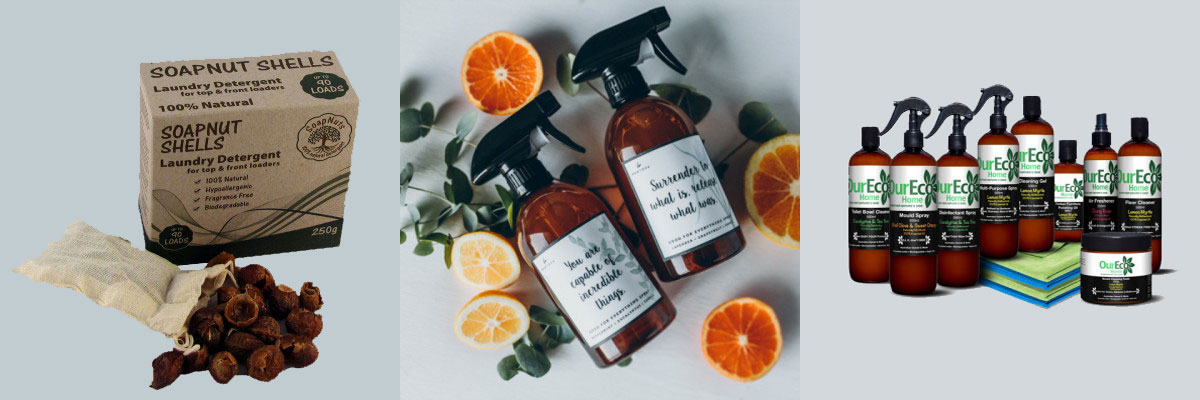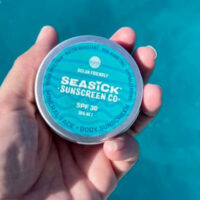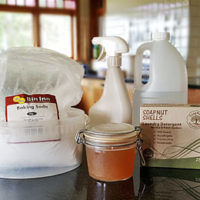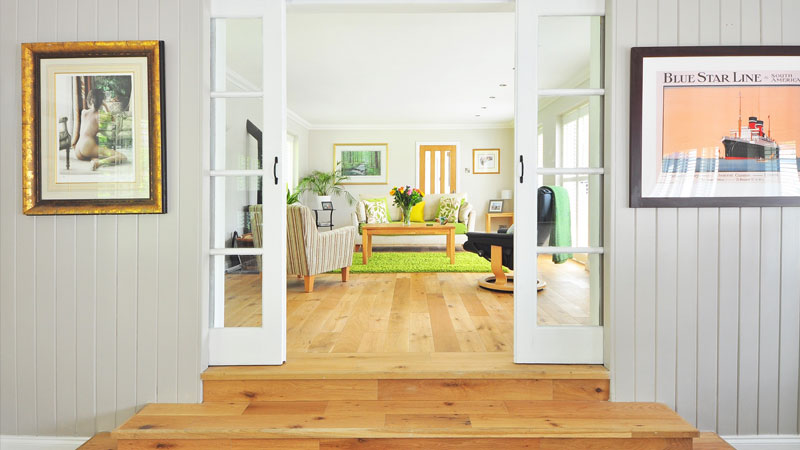
Do you live in a healthy home…?? It is a bit of a weird question isn’t it…. But when we talk about a healthy home, we really mean… is your home a safe environment for you and your family or could it be dragging you down or making you sick…??? Often, people will associate the term ‘healthy home’ with its cleanliness and standard of hygiene, and this of course is important. But a germ free home is not necessarily a healthy one.
Living in a healthy home can mean minimising the use and presence of harsh and potentially toxic chemicals. It means reducing the amount of waste your home produces and being conscious about the energy your home consumes. It means ensuring there is fresh air circulating in your home and there is no mould. And more….
Your Healthy Home’s Structure and Integrity
First, let’s look at the basics. Is your home structurally sound, heated and well insulated…?? Good ventilation is important although excessive draughts will make your home difficult to keep warm. Finding a balance that maintains a minimum temperature of around 16 degrees in the bedrooms and 18-20 degrees throughout the rest of your home is ideal.
Is your home watertight and safe from the elements with no leaks, adequate drainage and tip top plumbing..?? If your home is letting in water from the outside or your plumbing has sprung a leak, damp and mould will become a problem (at the very least…!!).
You’ll often be able to smell a problem before you can see it. There will be a musty, damp smell in any room that is affected which will become even more obvious if the door is left closed for a while. Another tell tale sign is if you see mould growing on the walls or ceilings or perhaps on the back of your furniture.
In any of these scenarios, your healthy home is probably not as healthy as you’d like it to be. It’s best to get a professional to find and eliminate the source of the mould to avoid further, more severe damage to your home like rotting timbers.
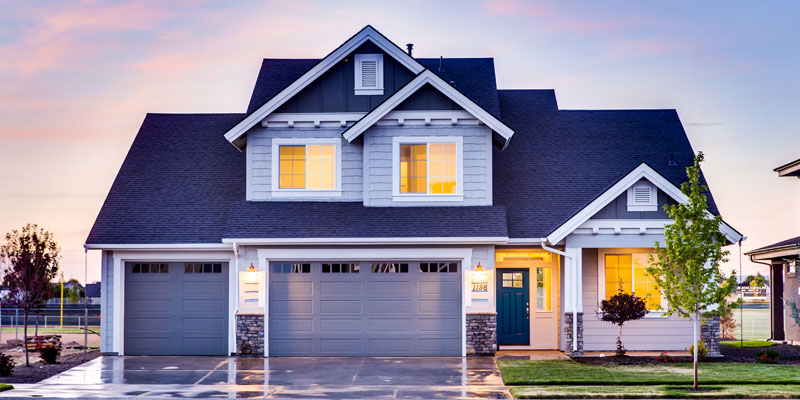
If there are no structural issues with your home, that’s great news – you are well on the way to having the healthy home you deserve. However, you might still be experiencing mould or damp smells. This could be from a build up of moisture that’s caused by just ‘living’. Did you know that the average Kiwi family produces around 8L of moisture each day from activities like cooking, showering and breathing….???!! We’ve some great tips on how to avoid mould and mildew further on in this blog.
Indoor Air Quality
Air pollution is a well documented concern, but most of us consider this to be an issue when we’re outside in the ‘big smoke’ (for example)…not when we’re sitting at home. But it’s not uncommon for air quality in the home to be even worse than the air quality outside!!
Indoor pollutants fall into two categories: particles and gases. Particles that can pollute the air include dust, smoke and pet dander as well as things like dust mites, bacteria and mould. Gases come from things we use around the home like glues, paints, candles and cleaning products which we’ll talk about in detail later in this article.
If we don’t get enough ‘fresh air’ from outside circulating around our homes, indoor pollutants can build up, reducing the air quality in the home. This can affect our health, increasing the chances of an allergic flare up or respiratory problems like asthma. Improving the air quality in the home can be as easy as opening the windows. This gets the air circulating and lets fresh air into your home.
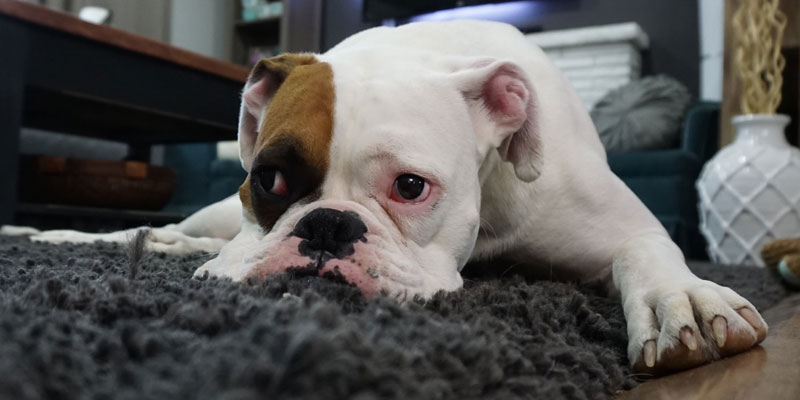
Particulate pollutants are slightly easier to tackle than gaseous ones, because most of them are visible. To reduce things like dust and pet dander… I’m sorry to say, but there’s nothing for it but to give your house a good old clean with the vacuum and a duster!! Brushing your pets regularly (outside…) will also help to keep pet hair and dander to a minimum.
Wash bedding every week to get rid of dust mites and air duvets, pillows and throws on the washing line regularly.
Mould and Mildew
Dampness, mould and the associated spores can be tricky to tackle if they invade your healthy home. Bathrooms are a favourite place for moulds because of the high humidity levels. Always use a ventilation fan if you have one when showering and open the windows if possible. Wash bath mats and towels regularly to prevent mould and bacteria making homes there and dry them thoroughly between uses too if possible. Hang wet laundry and damp towels outside when you can. They will smell great and keep all that excess moisture out of your house.
Curtains and blinds also seem to be a favourite place for mould and mildew to grow, especially if you wake up to regular condensation on your windows – we have this problem every morning in winter……!! Getting rid of the moisture will help although it’s a tedious job to have to do. A battery operated window washer which sucks up the condensation into a tank is a great tool for this, but a wipe down with an absorbent cloth will also do the trick.
Getting rid of the mould on your curtains is hard to do. I speak from experience when I say that washing them in the washing machine does not work. It shrinks the curtains and doesn’t actually get rid of the mould so I don’t recommend this approach…. Essential oils are a great natural tool to have on hand for this sort of problem; tea tree, eucalyptus and peppermint oils are all excellent disinfectants.
Mix 10-20 drops of your chosen oil with 1 cup of water and 1 cup of white vinegar in a spray bottle. Spray the affected area and leave to dry for at least 2 hours. Scrub with a brush to remove the mould. If the mould is stubborn, try upping the strength of your solution by mixing 20 drops of oil with 1 cup of vinegar. Spray the area every day for 5 days and then twice a week. This should kill the mould, although unfortunately, the fabrics may still be stained.
Chemicals and Cleaning
Nasty chemicals are everywhere these days; in our food, on our food, in our clothes, in our skincare and in our cleaning products!! It’s ironic and unfortunate that when we’re trying to clean our homes and create a healthy living environment…we can be unwittingly introducing toxins and harmful chemicals into our homes instead. The dirt may be gone but the health risks posed by some of the ingredients contained in our cleaning products seems an unnecessarily high price to pay.
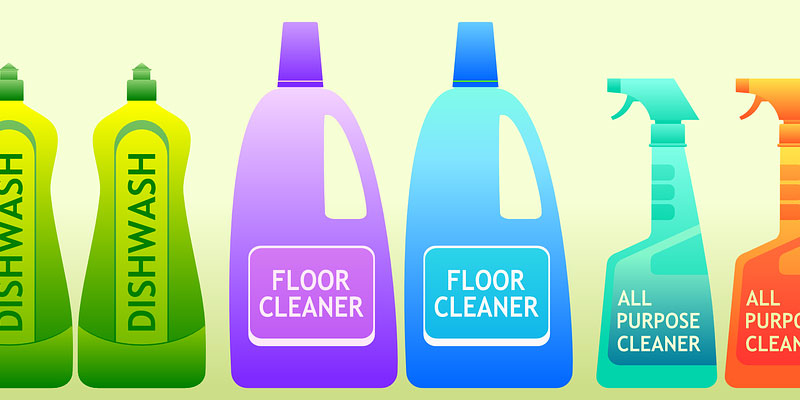
Household cleaning products contain a staggering array of chemicals. Some of them can be carcinogens or endocrine disrupters, some give off fumes that can cause asthma and some can irritate your skin and eyes on contact. When we spray or smell them, and they get into our lungs or touch our skin, they go straight into our bloodstream bypassing the liver and kidneys which are the body’s natural defence system against toxins.
One of the biggest problems is that there is no legal requirement for companies to tell us what’s in their cleaning products, making it even harder for us to work out what we should or shouldn’t be buying. But the products that contain really nasty chemicals will usually come with warnings. For example, this is what’s written on an old bathroom cleaner spray bottle of mine that has since been filled with vinegar…”WARNING: Ensure adequate ventilation when using. Vapour may be harmful. May give off dangerous gas if mixed with other products. Corrosive. May produce severe burns. Attacks skin and eyes.” Seriously…..???!! I can’t believe I ever bought this or used it!!
Although non-toxic cleaning products are not always easy to identify on the shelf, as a general rule of thumb….if there are warnings on the bottle like the one above, then I would suggest you look for something else. There are some great plant based, natural options out there now and Green Elephant has a fantastic selection of safe, non-toxic cleaning products including soap nuts (which are about as natural as you can get) and great ranges from Santosa, Our Eco Home and Rockin’ Green.
And if you’re willing to give it a try, there are plenty of recipes and instructions out there which tell you how to make your own cleaning products using easily accessible and cheap ingredients like vinegar.
Using Air Fresheners and Fragrances
It’s always nice to enter a house that smells nice isn’t it..?? Some fragrances are known to elicit particular emotions or feelings and can help us relax, unwind or feel energised. So, what is the safest way to make our healthy home smell nice..??
Air fresheners are a popular choice as they are cheap and easily accessible in the supermarket aisles. They come in spray cans, little units that you plug into an electric socket and blocks of gel that sit on your bench in not so attractive plastic containers. Unfortunately, whichever dispenser you choose, your air freshener is likely to contain an array of hazardous substances.
Chemicals including phthalates (a hormone disrupter) and formaldehyde, naphthalene and p-dichlorobenzene (all carcinogens) are some of the worst that might be in your Pine Fresh or Summer Breeze gel block.
Candles are another ‘air freshener’ option which can also contribute to the atmosphere of your home in the evening. But….many are made of paraffin which, when burned gives off ultra fine soot particles containing acetone, benzene and toluene – not unlike the exhaust fumes given off by a diesel engine. The chemicals used to create the fragrances are also an issue and can trigger asthma attacks and migraines.
So, be careful when shopping for air fresheners at the supermarket. Look for brands that have the Environmental Choice New Zealand logo which will always be a better option. If scented candles are your thing, choose ones made of environmentally responsible soy or beeswax (not paraffin) that have been fragranced with essential oils.
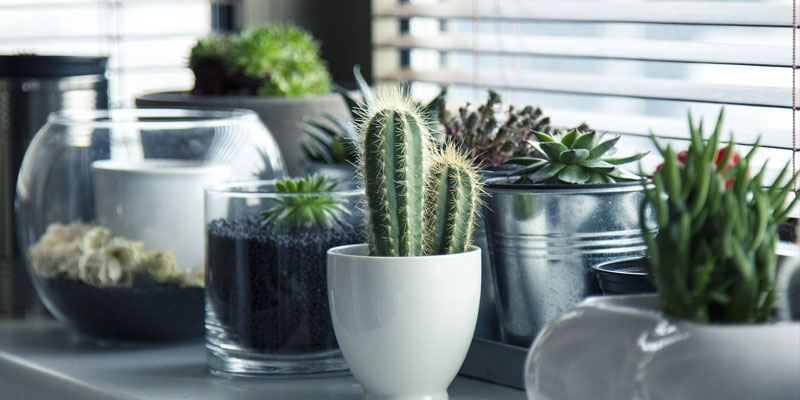
And whilst they won’t necessarily make your home smell nicer…certain house plants can actually absorb harmful chemicals like formaldehyde and benzene which they do as part of their normal photosynthesis process. A clean air study by NASA identified English ivy, aloe vera, peace lilies and florist’s chrysanthemum as being amongst the most effective ‘air purifiers’. So, greening up your home doesn’t just look nice…it’s good for your health too!!
Your Home’s Environmental Impact
If we think about the bigger picture, a healthy home isn’t just about what goes on inside and how our homes affect us. It’s also about the impact our homes as a unit have on the environment; how much energy do they consume, for example, how much rubbish do they produce and what chemicals are washed down their drains into the waterways.
Lower Your Carbon Footprint
Carbon neutral is a term used to describe highly efficient or low/no impact homes, but most of us wouldn’t be able to achieve true carbon neutrality and most of us, well….probably wouldn’t want to take it that far!! A more achievable goal would be to lower our energy consumption and reduce the amount of waste we produce, both of which could save us money and lower the overall impact our home has on the environment.
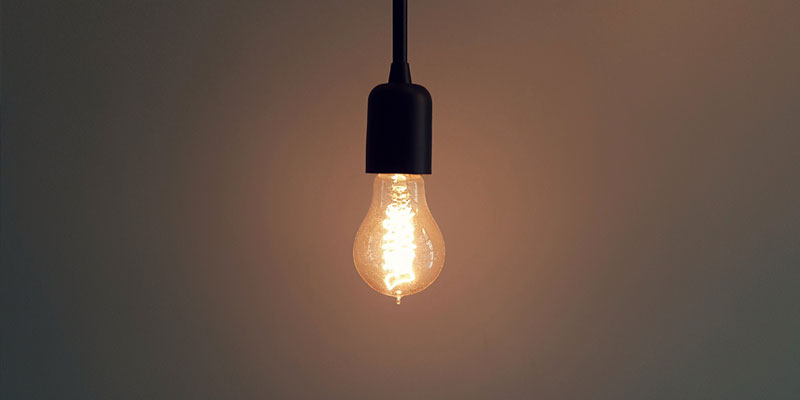
Every time we switch on a light, rev up the heat pump or make toast, we’re using energy, which creates carbon emissions and depletes valuable resources (including our own money). So it makes total sense that we should look for ways to minimise the amount we use.
Here are some super easy things to try:
- Switch lights off when you’re not in the room
- When your bulbs pop, replace them with LEDs which use far less energy than incandescent bulbs
- Put heaters and towel rails on timers so they’re not running when they’re not needed
- Pull curtains and blinds at dusk to keep the heat inside your healthy home
- Turn off appliances at the wall rather than leaving them on standby – appliances running on standby can cost more than $100 a year!!
- Hang your laundry outside to dry rather than using a tumble dryer
- Share a shower (!!) to reduce hot water usage
If you’re ready to take it a little bit more seriously and want to do more to reduce your energy consumption, there is lots of useful information and advice on the energywise website.
Tackle Your Waste
And now let’s talk about waste. The rubbish we throw away has a huge impact on the environment. As we know, if it’s not reused, upcycled, composted or recycled, our trash inevitably ends up in a landfill site. Landfill is awful. It’s awful to look at, it’s awful for the environment and it’s just not a sustainable solution to our ever increasing waste problem. So we should all be doing our part to reduce this problem at the source.
Next time you put something in your bin, consider this: could it be recycled? If so, recycle it. Maybe it’s food or food scraps that could be composted….in which case you may find a Kitchen Caddy Bin useful?? Could the item be used or appreciated by someone else..?? If so, why not donate it to a charity shop…?? You get the idea. By going through this thought process every time you throw something away and then doing something about it, hopefully you’ll be able to reduce the amount of waste your house contributes to landfill.
Of course, the ultimate tool in reducing waste is to simply not consume in the first place. If you don’t already, saying no to single use plastic could be your first step. It’s cheap, simple and easy to do once you get into the habit. Choose from this fab range of reusable grocery and produce bags and make your next trip to the supermarket the start of your journey to lower waste.
It Doesn’t all Wash Away
So, what goes out the door of our healthy home to the tip has an impact on the environment, and guess what…?? What we wash down the sinks and drains is important too. After the bubbles disappear down the plug hole, they are treated, along with sewage and other waste water at water treatment plants before being discharged into nearby waterways. Most ingredients in your cleaning products will break down and become harmless after this process, but others, including nitrogen, ammonia and phosphorus do not. After they leave the water treatment plant they can impact the water quality and put the ecosystem of the waterways out of balance.

Nitrogen, ammonia and phosphorus are all fertilisers so when they are introduced into waterways in an uncontrolled way, they can increase the growth rate in some types of plant life. This can lead to areas of dense vegetation which can block the flow of water and crowd out marine life.
Phosphates were (are) used in a wide range of detergent products including laundry and dishwasher powder but following concerns raised about the increase in algal blooms, a number of countries including the EU and the US have banned their use in detergents. This should give us some comfort…… HOWEVER, I found a packet of dishwasher tabs on the supermarket shelf that had Phosphates as its top ingredient at greater than 30%. Unbelievable!!
So, our advice is to check the packaging. Many companies won’t list their ingredients but will give information as to what the product does not contain. So look for full ingredient lists so you can see for yourself, or products that state they do not contain phosphates or nitrates at the very least.
We’ve shown you a selection of super simple, cheap and sometimes free things you can do to create a healthy home. Some of the suggestions in this article will even save you money!! So go on…throw open a window and give your home a breath of fresh air!!

